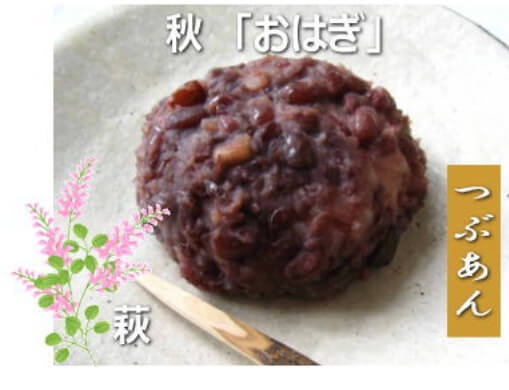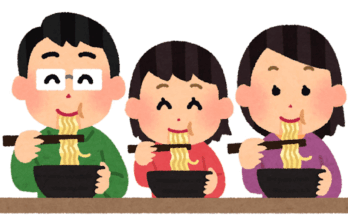General Description of Ohagi and Botamochi
Ohagi and Botamochi are traditional Japanese sweets made from glutinous rice covered with sweet red bean paste. These sweet rice balls are called different things depending on whether it is made in autumn or spring.
During autumn, this sweet rice ball is called Ohagi (おはぎ) because it resembles the flower called ‘hagi’ (萩, bush clover) that blooms in the fall. During the autumn season, the red beans are freshly harvested. This means the red beans are very soft so the sweet bean paste is made with the skin which is called tsubu an (つぶあん)

In the spring, it is called Botamochi (ぼたもち), named after the peony (牡丹) flower that appears during the spring. During the spring, the peel of red beans is harder, so smooth bean paste (koshi an) is made. However, with modern methods and equipment, both can be enjoyed all year around now in Japan.

Ohigan, a Japanese tradition which is held twice a year.
Ohigan (お彼岸) is a traditional week-long seasonal event held in Japan each spring and autumn. It centers on the spring equinox (haru-higan) and autumn equinox (aki-higan), with the equinoxes being public holidays.
During Ohigan, people visit their ancestors’ graves to pay their respects and offer prayers. In spring, they add special thanks for the arrival of the warm season and the birth of new life, while in autumn, they add heartfelt thanks for their harvest. These traditions are believed to connect the living with the spiritual realm and express gratitude for ancestors.” It is common to make special foods such as Ohagi or Botamochi and offer them to the grave or Buddhist altar at home. That is because the color of red beans are believed to ward off evil spirits.
The Midsummer “Obon” (お盆) Festival is the period when ancestors return to this world. On the other hand, “Ohigan,” (お彼岸) is the time when you visit their grave and show gratitude to them. These two events are basically different.

The Regional Variations of Ohagi
There are a couple of variations of Ohagi in that, instead of sweetened red bean jam, the glutinous rice is covered with sweetened Kinako (黄粉, soybean flour) or covered with Kurogoma (黒胡麻, black sesame), and so on. People enjoy eating the Ohagi or Botamochi after offering them to their ancestors.
Please check this link: Botamochi Recipe (Ohagi) – Japanese Sweet Rice Balls


Ohagi as a sweet refreshment
Although often associated with the Ohigan equinoctial periods, ohagi is a beloved Japanese sweet enjoyed throughout the year. You can enjoy a smaller size of Ohagi at some of the Japanese style cafes (甘味処). Also, you can buy Ohagi at almost any supermarket in our neighborhood.


Final thoughts
Ohagi is a quite popular word for sweet rice balls covered with red bean paste and overwhelmingly more popular than the word “Botamochi,” even though the original making procedure and seasonal taste are different. Most Japanese people now do not care so much about the difference between these two. In our daily lives, people regard “Tsubu an” and ”Koshi an” as multiple choices to enjoy savoring Ohagi.
In my opinion, Ohagi and Botamochi are always connected with the memories of grandmothers who always welcomed us with the service of Ohagi at the time of Ohigan. The recipe of Ohagi or Botamochi has been inherited from grandmother by mother and daughter: a wonderful handing-down of our customs.

National Tour Guide (English), Eiken Grade 1, TOEIC A rank. Have been studying and teaching English for over 30 years.





 HTJ has a YouTube page! Check it out
HTJ has a YouTube page! Check it out